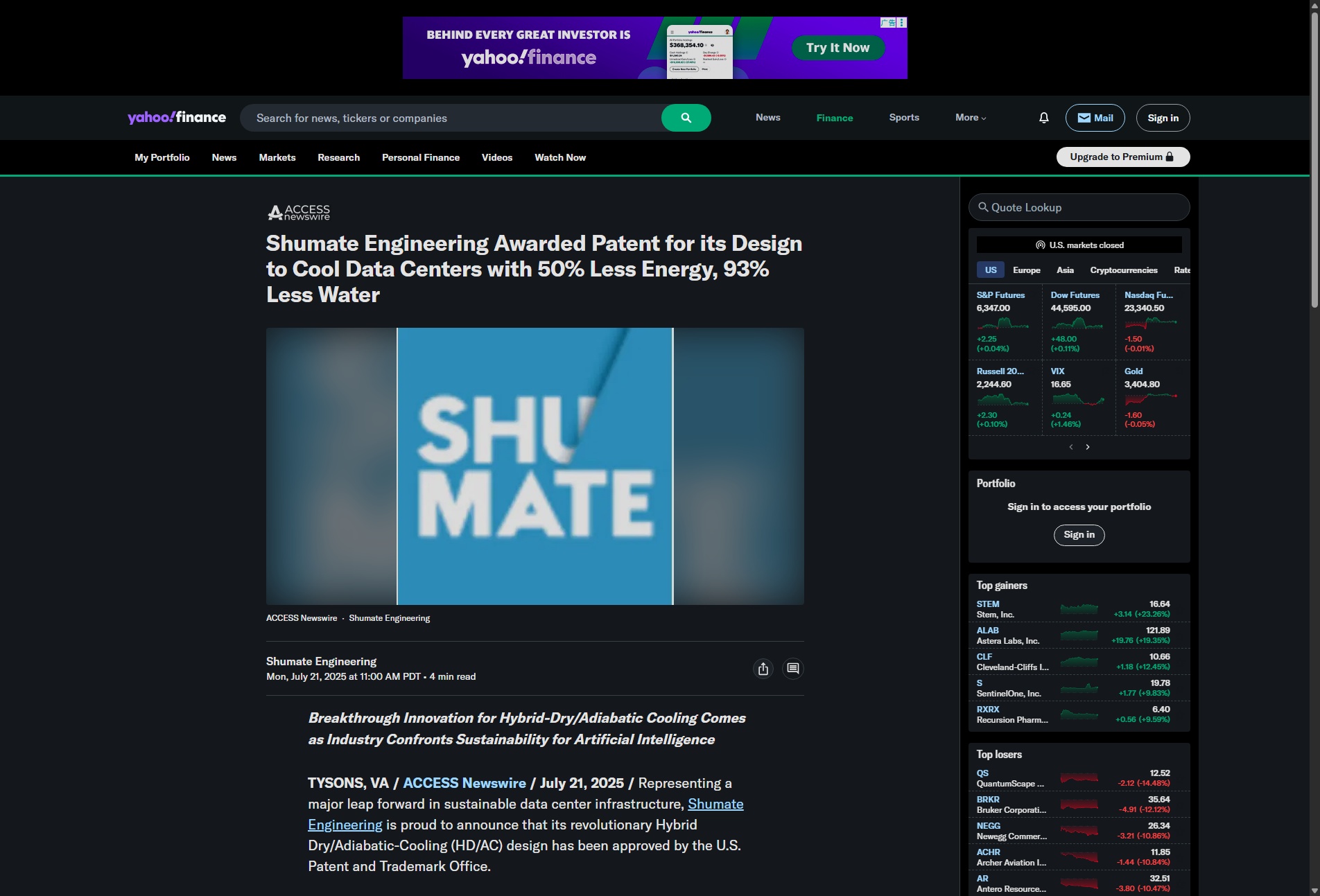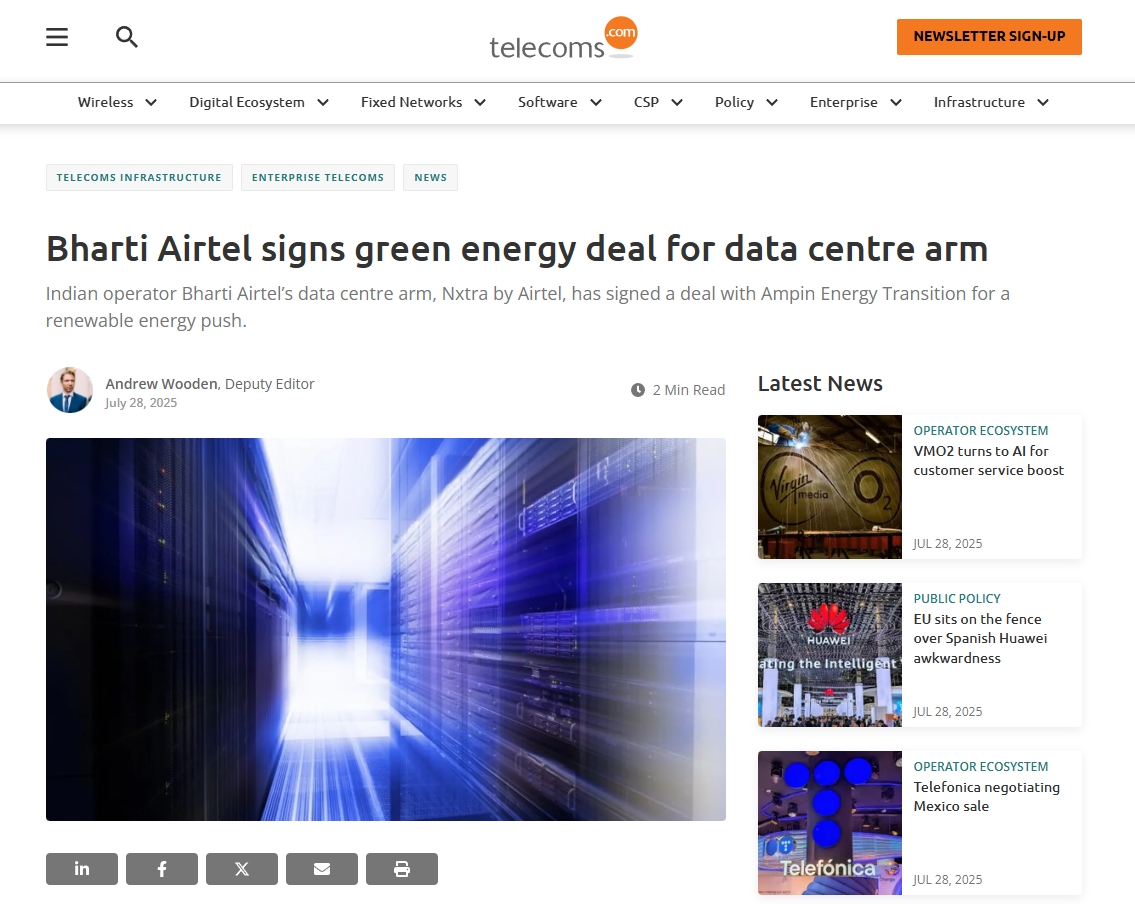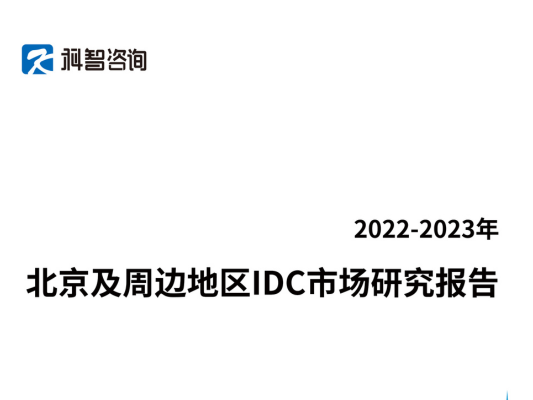Breakthrough Innovation for Hybrid-Dry/Adiabatic Cooling Comes as Industry Confronts Sustainability for Artificial Intelligence
Representing a major leap forward in sustainable data center infrastructure, Shumate Engineering is proud to announce that its revolutionary Hybrid Dry/Adiabatic-Cooling (HD/AC) design has been approved by the U.S. Patent and Trademark Office.
The design - co-invented by R. Stephen Spinazzola, PE, Shumate's Director of Mission Critical Services, and Justin Penrod, PE, Shumate's Director of Mechanical Engineering- gives data center operators the ability to cut power consumption by 50 percent and water use by 93 percent compared to conventional cooling designs.
"With the need for massive computing power taking hold around the world, the data center industry is booming right now. However, the power and water needed to cool the racks and keep them functioning has limited its progress," said Spinazzola, who now has seven engineering patents to his name. "This solution utilizes a single closed loop to run two taps at different water temperatures to cool high-density racks utilizing both fans and direct-liquid."
The ability to alternate between both approaches is what sets the design apart - limiting the resources needed to sustain a hyperscale data center for uses like artificial intelligence, which has been fueling enormous growth in the sector globally.
"Major data center projects backed by the biggest names in tech have resorted to drastic measures to meet this demand, including the construction of high-density data centers that span city blocks and recommissioning nuclear power plants, but our cooling design manages to use half of the power and less than 10 percent of the water compared to traditional data centers - offering a massive savings of natural resources and billions of dollars in costs," said Daren Shumate, PE, Founder and Managing Principal of the Vienna, Va.-based firm.
The design uses a closed-loop system that supports two distinct cooling flows:
68°F water for traditional air-cooled CRAC systems
90°F water for direct-to-chip liquid cooling
At the heart of the design is a hybrid adiabatic cooler - a dry cooler with intelligent "trim" evaporative functionality that activates only when outdoor conditions require it. During cooler months or off-peak hours, the system operates in economizer mode, taking full advantage of ambient temperatures. In warmer periods, it modulates with precision to efficiently maintain thermal balance without overusing energy or water.
"This patent affirms our commitment to solving real-world problems with high-performance, sustainable design," Penrod said. "With HD/AC, we're bridging the gap between old and new IT loads, while reducing environmental impact at scale."
The timing of the innovation could not be more relevant. As data center operators face mounting pressure from regulators and hyperscalers to streamline PUE (Power Usage Effectiveness) and WUE (Water Usage Effectiveness), HD/AC provides a scalable, future-proof answer. It's ideally suited for retrofitting legacy data centers, supporting mixed IT loads, and enabling new facilities to meet aggressive ESG targets.
Shumate Engineering credits its intellectual property legal team at Sterne, Kessler, Goldstein & Fox for bringing the application process, which has been several years in the making, to fruition.
"This milestone is the result of collaboration, persistence, and a clear focus on what matters: performance, sustainability, and innovation," Shumate said. "We're just getting started."
Key Benefits of the HDAC Design:
50% reduction in power use compared to conventional air- and liquid-cooling designs
93% less water use thanks to dry-first cooling with minimal evaporative assist
Dual-temperature delivery to support legacy and liquid-cooled racks simultaneously
Fully closed-loop, reducing risk of contamination and corrosion
Adaptive economization that adjusts in real-time for peak energy efficiency








